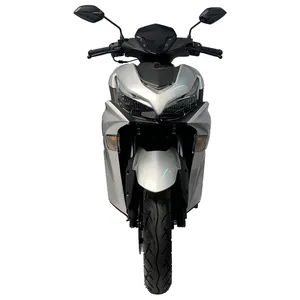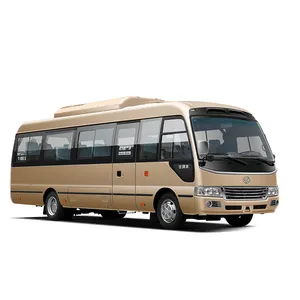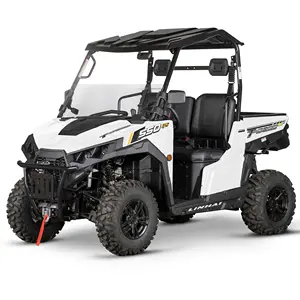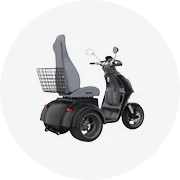Phổ biến trong ngành của bạn




Nhà Máy Giá thấp nhanh chóng Heat-up kỹ thuật số xách tay mini không gian phòng treo tường điện PTC gốm fan hâm mộ nóng với ERP
17,00 US$ - 17,30 US$
Đơn hàng tối thiểu: 2260 Bộ







Tùy Chỉnh 5V 12V 24V 220V Điện Linh Hoạt Polyimide Phim Bán Buôn Kapton Nóng
1,50 US$
Đơn hàng tối thiểu: 2 Cái
Vận chuyển mỗi chiếc: 16,85 US$







Tùy chỉnh chiều dài phát sáng sưởi ấm đèn hồng ngoại đôi ống sóng ngắn 400-10000W đèn hồng ngoại
3,00 US$ - 6,00 US$
Đơn hàng tối thiểu: 2 Cái







Sóng ngắn R7S 1500W Halogen đèn nhiệt phát hồng ngoại nóng đèn
20,99 US$ - 25,99 US$
Đơn hàng tối thiểu: 2 Cái
Vận chuyển mỗi chiếc: 40,00 US$







Máy Gia Nhiệt Ống Đôi Hồng Ngoại Sóng Ngắn Heraeus 09751720 Thay Thế Cho Máy Sơn
50,00 US$ - 150,00 US$
Đơn hàng tối thiểu: 5 Cái






Halogen Sóng Ngắn Hồng Ngoại Nóng Bắn Lò Ống Thạch Anh Máy Sưởi Hồng Ngoại
Sẵn sàng vận chuyển
3,00 US$ - 10,00 US$
Đơn hàng tối thiểu: 10 Cái
Vận chuyển mỗi chiếc: 16,81 US$






Chống Nước Sóng Ngắn Phòng Tắm Vàng Halogen Đèn Nhiệt Cho Ngoài Trời Patio Nóng
5,00 US$
Đơn hàng tối thiểu: 5 Cái






Sóng ngắn hồng ngoại máy sưởi 3800 wát 1055 mét đúc thổi máy sưởi ấm đèn 570 v đèn sưởi ấm
Sẵn sàng vận chuyển
13,00 US$ - 26,00 US$
Đơn hàng tối thiểu: 10 Cái
Vận chuyển mỗi chiếc: 2,60 US$






Máy Sưởi Hồng Ngoại Xa Sóng Ngắn Bức Xạ Máy Sưởi Ống Thạch Anh Halogen
2,60 US$ - 18,35 US$
Đơn hàng tối thiểu: 10 Cái




Đèn Sưởi Hồng Ngoại Các Yếu Tố Nhiệt Hồng Ngoại 1000W 230V Máy Thổi Sơn Sóng Ngắn Trung Bình Xa Máy Sưởi Hồng Ngoại
Sẵn sàng vận chuyển
30,00 US$ - 40,00 US$
Đơn hàng tối thiểu: 10 Cái
Vận chuyển mỗi chiếc: 4,70 US$

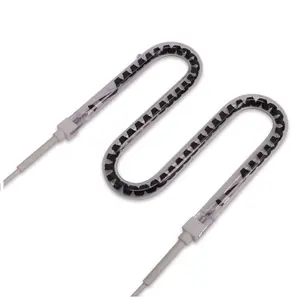




Máy Nướng Bánh Mì Nướng Bánh Mì Máy Sưởi Điện Nhanh 230V 2000W Đèn Sưởi Hồng Ngoại Sóng Ngắn Thạch Anh Cho Các Bộ Phận Lò Nướng
1,20 US$ - 22,00 US$
Đơn hàng tối thiểu: 10 Cái
Các tìm kiếm liên quan:
nhiệt hồng ngoại thạch anh nóngthạch anh nóng hồng ngoại nóngkhông gian hồng ngoại thạch anh nónghồng ngoại xa điện thạch anh nóngkuwait điện hồng ngoại thạch anh nónglò sưởi thạch anh cb6 yếu tố thạch anh nóngdễ dàng nhà hồng ngoại thạch anh nóngđiện hydronic nóngfreestanding hồng ngoại thạch anh nónglò sưởi cơ thể hồng ngoại xalò sưởi điện ngọc bíchthiết bị sưởi ấm của khách hàngliệu pháp sưởi ấm và làm mát thiết bịcai nghiện nhiệt hồng ngoại xa






R7s sóng ngắn yếu tố làm nóng Điện thạch anh đơn ống sưởi ấm đèn hồng ngoại nóng cho RTP hệ thống
3,52 US$ - 15,63 US$
Đơn hàng tối thiểu: 10 Cái






Bộ Phận Làm Nóng Ống Thạch Anh Trắng Máy Sưởi Điện Hồng Ngoại Sóng Ngắn 650W
5,55 US$ - 18,45 US$
Đơn hàng tối thiểu: 2 Cái





IR đèn nhiệt hồng ngoại sưởi ấm đèn giấy khô IR-phát nhanh sóng ngắn nóng
Sẵn sàng vận chuyển
100,00 US$
Đơn hàng tối thiểu: 5 Cái
Vận chuyển mỗi chiếc: 68,31 US$






Máy Sưởi Hồng Ngoại Sân Vườn Chạy Điện Máy Sưởi Bức Xạ Gắn Trần 2000W Máy Sưởi Đèn Sóng Ngắn Hồng Ngoại Nhiệt Tức Thì Chống Nước
40,00 US$ - 60,00 US$
Đơn hàng tối thiểu: 2000 Cái






Nhà sản xuất bán buôn sóng ngắn đôi ống đèn hồng ngoại Emitter cho nóng hồng ngoại
5,00 US$ - 25,00 US$
Đơn hàng tối thiểu: 30 Bộ






Lớp Phủ Vàng Hồng Ngoại Ống Đèn Thạch Anh 1kw 2kw 3KW Sóng Ngắn Halogen Sưởi Ấm IR Đèn Hồng Ngoại Nóng Công Nghiệp Cho Phòng Khô
2,00 US$ - 8,00 US$
Đơn hàng tối thiểu: 10 Cái
Vận chuyển mỗi chiếc: 13,48 US$






Sóng ngắn IR nóng cho in ấn và gói ứng dụng hồng ngoại sưởi ấm đèn cho màn hình in ấn
8,50 US$ - 9,50 US$
Đơn hàng tối thiểu: 20 Cái
Vận chuyển mỗi chiếc: 4,50 US$






Rema nóng bán đèn hồng ngoại thạch anh vàng tráng ống đơn sóng ngắn nóng
8,50 US$ - 35,00 US$
Đơn hàng tối thiểu: 2 Cái






Đôi Ống Nhiệt Đèn hồng ngoại thạch anh yếu tố làm nóng sóng ngắn IR nóng cho đúc nhựa
4,99 US$ - 5,99 US$
Đơn hàng tối thiểu: 100 Cái
Vận chuyển mỗi chiếc: 75,17 US$






Yếu tố làm nóng hồng ngoại thạch anh đèn hồng ngoại sóng ngắn
1,00 US$ - 20,00 US$
Đơn hàng tối thiểu: 10 Cái






Đèn Hồng Ngoại Sưởi Ấm Bằng Halogen Sóng Ngắn Thạch Anh 350W Cho Máy Sưởi Công Nghiệp
1,25 US$ - 1,50 US$
Đơn hàng tối thiểu: 100 Cái






Bộ Phận Làm Nóng Hồng Ngoại Thạch Anh Ống Đôi Máy Sưởi Hồng Ngoại Điện Tiết Kiệm Năng Lượng Hiệu Quả Cao
400,00 US$ - 450,00 US$
Đơn hàng tối thiểu: 1 Cái











Nửa Trắng Phản Xạ Thạch Anh Nhiệt Đèn Halogen Hồng Ngoại Nóng
1,00 US$ - 15,00 US$
Đơn hàng tối thiểu: 1 Cái






Đèn Hồng Ngoại Mạ Vàng Đèn Sưởi Hồng Ngoại Thạch Anh 2000W Cho Máy Sưởi Ngoài Trời
1,00 US$ - 5,00 US$
Đơn hàng tối thiểu: 5 Cái






800W 1500W 2000W 2500W thạch anh hồng ngoại Halogen đèn IR nóng với ống sưởi ấm đèn
4,90 US$ - 9,80 US$
Đơn hàng tối thiểu: 10 Cái
Vận chuyển mỗi chiếc: 60,78 US$






Đèn Đỏ 1500W Đèn Sưởi Cho Thú Cưng Máy Sưởi Hồng Ngoại Sóng Ngắn Đèn Sưởi Hồng Ngoại Cho Máy Thổi Khuôn Cho Thú Cưng
10,00 US$ - 15,00 US$
Đơn hàng tối thiểu: 10 Cái






Đèn Sấy Khô Sơn Hồng Ngoại HoneyFly 1000W 220V Máy Sưởi Hồng Ngoại Cầm Tay Sóng Ngắn IR Ống Vàng Cắm EU Để Sửa Chữa Xe Hơi
Sẵn sàng vận chuyển
38,89 US$ - 43,89 US$
Đơn hàng tối thiểu: 2 Cái
Vận chuyển mỗi chiếc: 28,64 US$






Sưởi ấm tùy chỉnh hỗ trợ 1000W 2000W thạch anh sưởi ấm Ống nóng sóng ngắn bóng đèn IR Emitter đèn hồng ngoại
0,50 US$
Đơn hàng tối thiểu: 1000 Cái






Dashu hình dạng tùy chỉnh sóng ngắn thạch anh Halogen hồng ngoại nóng thạch anh Halogen nóng Đèn ống
5,60 US$ - 7,40 US$
Đơn hàng tối thiểu: 10 Cái
Vận chuyển mỗi chiếc: 5,32 US$



500W/1000W sóng ngắn yếu tố làm nóng bóng đèn Điện thạch anh nóng
Sẵn sàng vận chuyển
1,00 US$ - 3,99 US$
Đơn hàng tối thiểu: 250 Gói
Vận chuyển mỗi chiếc: 0,13 US$






Tùy Chỉnh Năng Lượng Mặt Trời Điện Ngoài Trời Máy Sưởi Thạch Anh Sóng Ngắn Ống Nhiệt Ánh Sáng Halogen Hồng Ngoại Xa Sợi Carbon Sưởi Ấm Đèn
3,85 US$ - 14,88 US$
Đơn hàng tối thiểu: 10 Cái





Sóng Ngắn Tungsten Halogen Nóng Sưởi Ấm Hồng Ngoại Đèn Cho Lớp Phủ Bột Lò
1,60 US$ - 15,00 US$
Đơn hàng tối thiểu: 50 Cái












QIR240-3000/A 2450K 3000W Gốm Cơ Sở Vật Liệu Nước Bằng Chứng Sóng Ngắn IR Sưởi Ấm Điện Ống Thạch Anh Ánh Sáng Màu Đỏ Đèn Hồng Ngoại
8,00 US$ - 10,00 US$
Đơn hàng tối thiểu: 2 Cái
Vận chuyển mỗi chiếc: 126,29 US$







Bán buôn par38 sóng ngắn hồng ngoại halogen nóng đèn cho động vật gia cầm
1,85 US$ - 2,34 US$
Đơn hàng tối thiểu: 1000 Cái






Sóng ngắn sưởi ấm hồng ngoại yếu tố đèn cho sơn phun phòng CE chứng nhận tùy chỉnh
Sẵn sàng vận chuyển
16,00 US$ - 45,00 US$
Đơn hàng tối thiểu: 1 Cái
Vận chuyển mỗi chiếc: 45,66 US$
Các danh mục hàng đầu
Giới thiệu về lò sưởi hồng ngoại sóng ngắn
Alibaba.com cung cấp các sản phẩm 1508 lò sưởi hồng ngoại sóng ngắn. Có rất nhiều lò sưởi hồng ngoại sóng ngắn lựa chọn dành cho bạn, chẳng hạn như nhà máy sản xuất, máy móc cửa hàng sửa chữa, và xây dựng. Bạn cũng có thể chọn từ điện, sưởi ấm, và kháng lò sưởi hồng ngoại sóng ngắn. Cũng như từ thép không gỉ, gốm, và 304 thép không gỉ lò sưởi hồng ngoại sóng ngắn.Và bất kể lò sưởi hồng ngoại sóng ngắn là mới.
